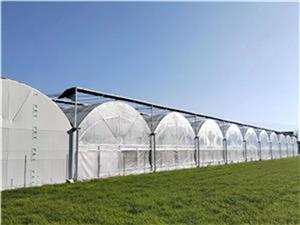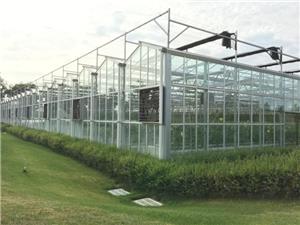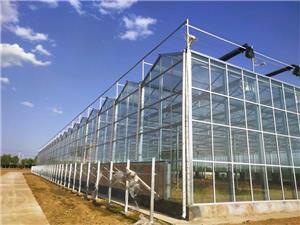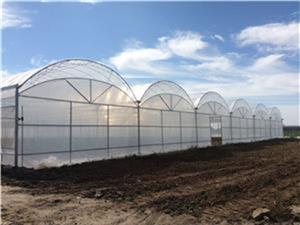aeroponics cultivation
Aerosol culture mainly consists of three parts:
Firstly, the part that fixes the plants and shades the roots; two
Part one is the section for supplying nutrient solution; aeroponics cultivation part three is the computerized automatic control section. Please provide the text you would like translated. The fixed support part
The form of fixing plants in aeroponics is different from that in soil cultivation. In soil cultivation, plants are fixed underground by their root systems, while in aeroponics cultivation, the root systems are suspended in the air. Therefore, the base of the plants can only be fixed by filling the planting holes, fixing the planting baskets, or suspending the plants in the air.
Fixed ones require physical support, including cultivation racks, cultivation boards or trough beds.
According to the form of physical support, aeroponics cultivation can be classified into: tower aeroponics, ladder aeroponics, column aeroponics, aeroponics cultivation bucket aeroponics, tube aeroponics, trough aeroponics, arch aeroponics, channel aeroponics, box aeroponics, hole aeroponics, and airbag aeroponics, etc.
2. Whether the construction of the nutrient solution supply part and the nutrient supply part is standardized and regulated directly affects the atomization effect and plant growth. The supply part consists of a nutrient solution pool, cultivation beds (trays or pipes, etc.), bottom valves, water pumps, filters, strong magnetic processors, nutrient solution sterilizers, main water supply pipes, branch pipes and capillaries, as well as return water outlets and return water pipes, waterproof cloth, etc.
3. Computer Control Section
Computer control serves as the brain for management decisions in aeroponic cultivation systems and is a crucial device for achieving intelligent, digital, and precise management. It consists of three parts: the mainframe, sub-controllers, and sensors. Sensors are responsible for perceiving and collecting various parameters, such as the underground root environment, above-ground growth environment, or the physiological state of crops. Sub-controllers process the data collected from each cultivation area, and then the mainframe judges various parameters and issues execution instructions, similar to the neural sensing and brain decision-making process in the human body.
Currently, the environmental parameter management adopted in aeroponics cultivation includes air temperature, air humidity, leaf water film, light intensity, nutrient solution temperature, nutrient solution level, and nutrient solution concentration, etc. However, due to the special needs of production or experiments, sensors for carbon dioxide concentration, pH value, and even plant physiological state detection can also be configured.
Aerosol culture mainly consists of three parts:
Firstly, the part that fixes the plants and shades the roots; two
Part one is the section for supplying aeroponics cultivation nutrient solution; part three is the computerized automatic control section. Please provide the text you would like translated. The fixed support part
The form of fixing plants in aeroponics is different from that in soil cultivation. In soil cultivation, plants are fixed underground by their root systems, while in aeroponics, the root systems are suspended in the air. Therefore, the base of the plants can only be fixed by filling the planting holes, fixing the planting baskets, or suspending the plants in the air.
Fixed ones require physical support, including cultivation racks, cultivation boards or trough beds.
According to the form of physical support, aeroponics cultivation can be classified into: tower aeroponics, ladder aeroponics, column aeroponics, bucket aeroponics, tube aeroponics, trough aeroponics, arch aeroponics, channel aeroponics, box aeroponics, hole aeroponics, and airbag aeroponics, etc.
2. Whether the construction of the nutrient solution supply part and the nutrient supply part is standardized and regulated directly affects the atomization effect and plant growth. The supply part consists of a nutrient solution pool, cultivation beds (trays or pipes, etc.), bottom valves, water pumps, filters, strong magnetic processors, nutrient solution sterilizers, main water supply pipes, branch pipes and capillaries, as well as return water outlets and return aeroponics cultivation water pipes, waterproof cloth, etc.
3. Computer Control Section
Computer control serves as the brain for management decisions in aeroponic cultivation systems and is a crucial device for achieving intelligent, digital, and precise management. It consists of three parts: the mainframe, sub-controllers, and sensors. Sensors are responsible for perceiving and collecting various parameters, such as the underground root environment, above-ground growth environment, or the physiological state of crops. Sub-controllers process the data collected from each cultivation area, and then the mainframe judges various parameters and issues execution instructions, similar to the neural sensing and brain decision-making process in the human body.
Currently, the environmental parameter management adopted in aeroponics cultivation includes air temperature, air humidity, leaf water film, light intensity, nutrient solution temperature, nutrient solution level, and nutrient solution concentration, etc. However, due to the special needs of production or experiments, sensors for carbon dioxide concentration, pH value, and even plant physiological state detection can also be configured.




